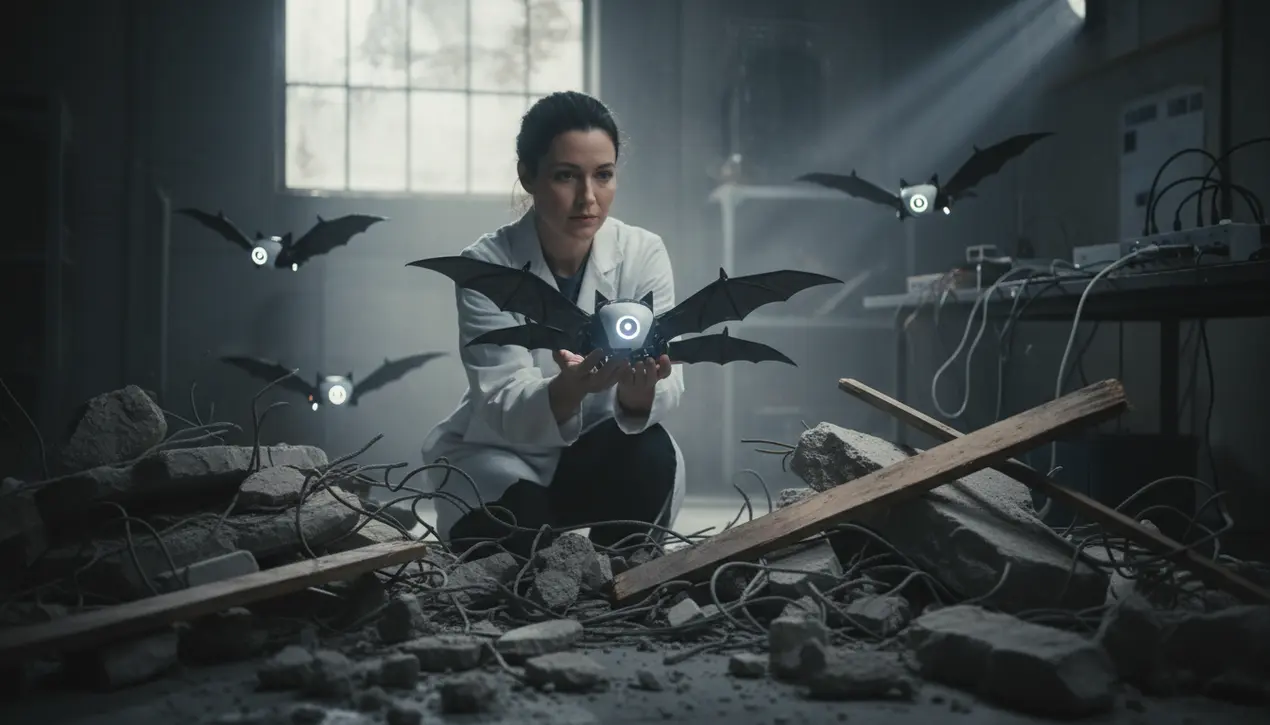
AIrobotics
Bio-Inspired Breakthrough: Bat-Like Robots Set to Revolutionize Search and Rescue
KE
Kevin White
3 hours ago7 min read
A pioneering researcher has created a swarm of miniature robots that use bat-inspired echolocation to navigate disaster zones, marking a transformative leap in search and rescue technology. These palm-sized automatons deploy advanced sonar to generate real-time 3D maps, enabling them to penetrate collapsed structures, thick smoke, and other visually obstructive environments where conventional methods fail.By emitting high-frequency ultrasound signals and processing the returning echoes with sophisticated machine learning, the robots can distinguish between hazardous debris and human survivors with remarkable accuracy. This innovation is part of a growing field of bio-inspired engineering, where natural designs—from whale fins to gecko feet—are solving modern technological challenges.The potential impact is profound, offering the possibility of deploying hundreds of these resilient scouts immediately after a catastrophe to locate survivors within minutes, thereby drastically improving rescue efficiency and survival rates. While challenges such as battery longevity and signal reliability in dense materials remain, and ethical considerations for autonomous decision-making require thorough review, the technology promises a more robust, all-weather alternative to current LiDAR and camera-based systems. This advancement underscores a powerful principle: some of the most sophisticated engineering solutions are discovered not by inventing anew, but by learning from millions of years of natural evolution.
#robotics
#bats
#search and rescue
#navigation
#ultrasound
#featured
Stay Informed. Act Smarter.
Get weekly highlights, major headlines, and expert insights — then put your knowledge to work in our live prediction markets.
Related News
Comments
Loading comments...
© 2025 Outpoll Service LTD. All rights reserved.












